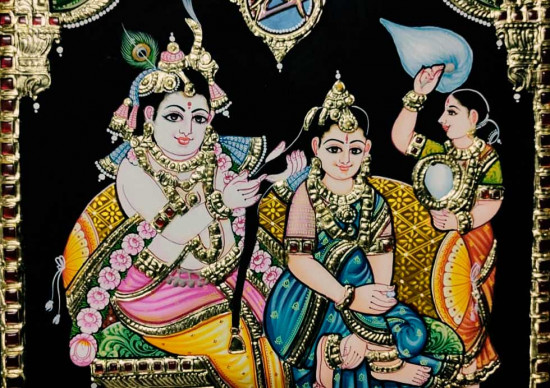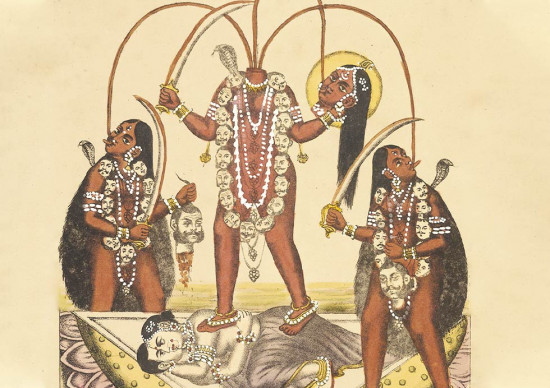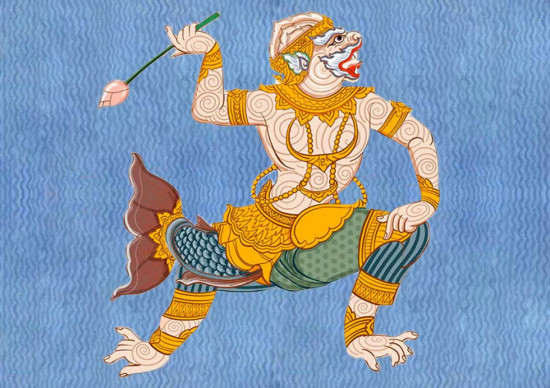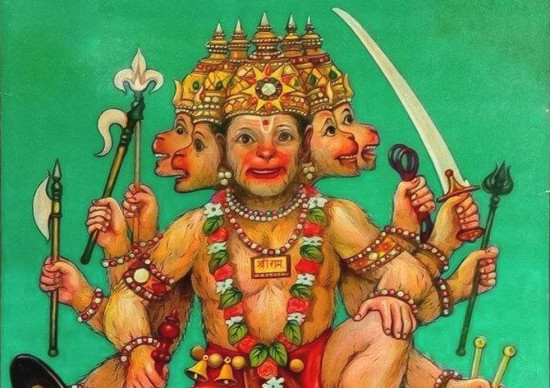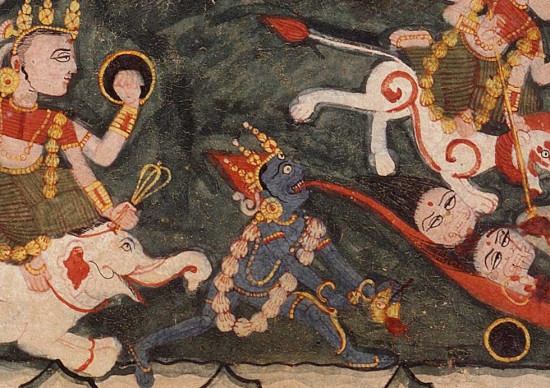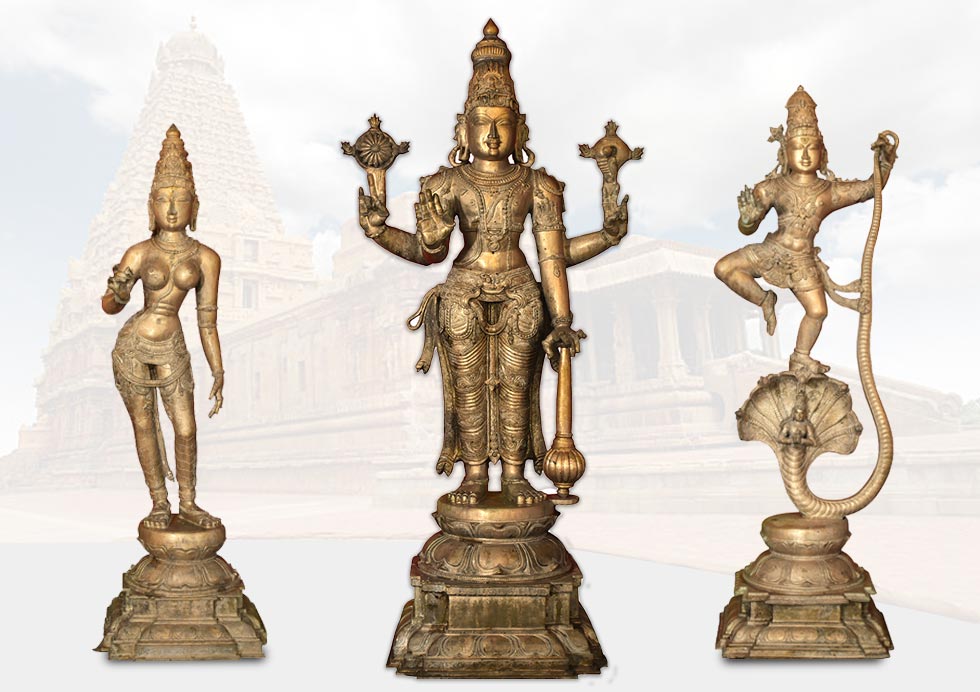
Metal art has a rich and ancient history in India, and the Chola dynasty is particularly renowned for its contributions to Indian art and sculpture. The Chola kings, who ruled from the 9th to the 13th century, were great patrons of art and architecture, and their love for artistic expression is evident in the magnificent Brihadeeswara temple in Thanjavur, Tamil Nadu.
The Chola Bronze Statues are indeed a remarkable gift from the Chola dynasty to the world of art. These bronze sculptures are known for their exquisite craftsmanship and intricate details. The Chola artisans were highly skilled in the lost-wax casting technique, which involved creating a wax model of the desired sculpture and encasing it in clay. Molten metal was then poured into the clay mold, replacing the wax and solidifying into a beautiful bronze sculpture.
The Chola Bronze Statues are indeed a remarkable gift from the Chola dynasty to the world of art. These bronze sculptures are known for their exquisite craftsmanship and intricate details. The Chola artisans were highly skilled in the lost-wax casting technique, which involved creating a wax model of the desired sculpture and encasing it in clay. Molten metal was then poured into the clay mold, replacing the wax and solidifying into a beautiful bronze sculpture.
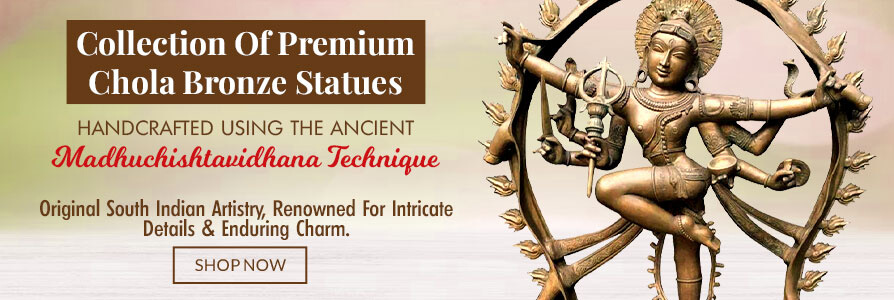
Chola Bronze Statues
The Chola Bronze Statues depict various deities, including gods and goddesses from the Hindu pantheon. These statues are characterized by their dynamic poses, intricate jewelry, and elaborate ornamentation. They capture the essence of divinity and exhibit a level of artistic mastery that is truly awe-inspiring.
The Chola dynasty’s love for art extended beyond bronze sculptures. They also contributed to other forms of art, such as mural paintings, temple architecture, and literature. The temples built during the Chola period are architectural marvels, known for their grandeur and intricate detailing.
The Chola dynasty’s love for art extended beyond bronze sculptures. They also contributed to other forms of art, such as mural paintings, temple architecture, and literature. The temples built during the Chola period are architectural marvels, known for their grandeur and intricate detailing.
The Chola dynasty’s artistic legacy has had a lasting impact on Indian art and continues to inspire artists and art enthusiasts to this day. The Chola Bronze Statues are not only treasured artistic creations but also a testament to the artistic and cultural achievements of the Chola dynasty.
Most Iconic Chola Bronze Statue of All The Time
The Nataraja statue is one of the most iconic and famous sculptures from the Chola dynasty. It is a masterpiece of Chola bronze sculpture and is revered as a symbol of cosmic dance and the divine form of Lord Shiva.
The Nataraja statue depicts Lord Shiva in his form as the Lord of Dance, known as Nataraja. This sculpture beautifully captures the dynamic and rhythmic movement of Lord Shiva as he performs the cosmic dance, representing creation, preservation, and destruction.
The Nataraja statue is built using the same lost-wax casting technique that was perfected by the Chola artisans. It showcases their exceptional skill and artistry in bronze sculpting. The sculpture is characterized by intricate details, such as the flowing locks of hair, multiple arms, and the flame-like aureole surrounding Lord Shiva. The sculpture also features various symbolic elements, including the dwarf under Lord Shiva’s feet, which represents ignorance that he overcomes through his dance.
The Nataraja statue is not only admired for its artistic beauty but also for its profound symbolism. It represents the cosmic cycles of life, death, and rebirth, as well as the harmony between the physical and spiritual realms. The sculpture is considered a masterpiece of Indian art and continues to captivate people with its aesthetic appeal and spiritual significance.
The Nataraja statue is housed in the Brihadeeswara temple in Thanjavur, Tamil Nadu, which was built by the Chola king Raja Raja I. This temple is a UNESCO World Heritage site and stands as a testament to the architectural and artistic brilliance of the Chola dynasty.
The Nataraja statue and other Chola bronze sculptures have become cultural treasures, admired not just in India but around the world. They exemplify the artistic genius of the Chola dynasty and their enduring contribution to the art and cultural heritage of India.
The Nataraja statue depicts Lord Shiva in his form as the Lord of Dance, known as Nataraja. This sculpture beautifully captures the dynamic and rhythmic movement of Lord Shiva as he performs the cosmic dance, representing creation, preservation, and destruction.
The Nataraja statue is built using the same lost-wax casting technique that was perfected by the Chola artisans. It showcases their exceptional skill and artistry in bronze sculpting. The sculpture is characterized by intricate details, such as the flowing locks of hair, multiple arms, and the flame-like aureole surrounding Lord Shiva. The sculpture also features various symbolic elements, including the dwarf under Lord Shiva’s feet, which represents ignorance that he overcomes through his dance.
The Nataraja statue is not only admired for its artistic beauty but also for its profound symbolism. It represents the cosmic cycles of life, death, and rebirth, as well as the harmony between the physical and spiritual realms. The sculpture is considered a masterpiece of Indian art and continues to captivate people with its aesthetic appeal and spiritual significance.
The Nataraja statue is housed in the Brihadeeswara temple in Thanjavur, Tamil Nadu, which was built by the Chola king Raja Raja I. This temple is a UNESCO World Heritage site and stands as a testament to the architectural and artistic brilliance of the Chola dynasty.
The Nataraja statue and other Chola bronze sculptures have become cultural treasures, admired not just in India but around the world. They exemplify the artistic genius of the Chola dynasty and their enduring contribution to the art and cultural heritage of India.
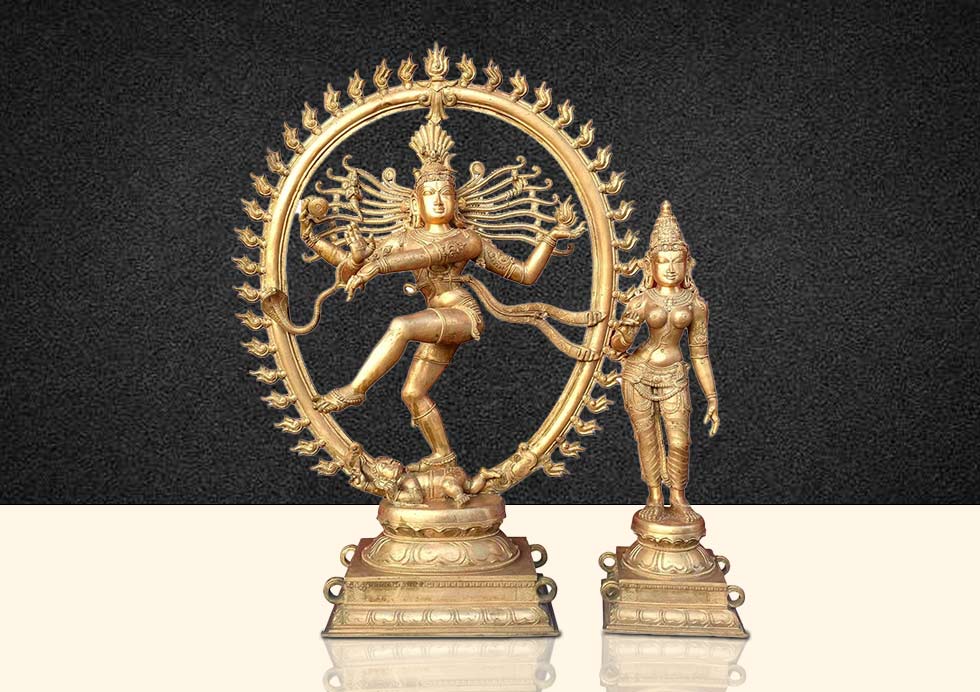
The reasons behind the enduring appeal of Chola bronze statues.
Artistic Excellence
Chola bronze statues are celebrated for their exceptional artistic quality. Skilled artisans of the Chola period achieved a high level of mastery in bronze casting, using the lost-wax technique to create these magnificent sculptures. The statues are characterized by their dynamic poses, graceful proportions, and intricate ornamentation, displaying the artistic brilliance of the Chola craftsmen.
Spiritual Significance
Chola bronze statues primarily depict Hindu deities, such as Shiva, Vishnu, Parvati, and various other gods and goddesses. These statues were created as objects of worship, to serve as physical representations of the divine. The intricate details and the aura of spirituality infused in these statues make them highly revered by devotees and art enthusiasts alike. Their presence in temples and religious ceremonies adds to their spiritual significance.
Cultural Heritage
Chola bronze statues are an integral part of India’s cultural heritage. They reflect the religious and cultural beliefs of the Chola dynasty and provide insights into the artistic and technological advancements of the time. These statues serve as a tangible link to India’s rich past, reminding people of the glorious artistic traditions that have been passed down through generations.
Technological Marvel
The creation of Chola bronze statues required exceptional technical skill and knowledge. The lost-wax casting technique employed by the Chola artisans involved several intricate steps, including the creation of wax models, clay molding, and the casting of molten metal. The mastery of this complex process showcases the advanced metallurgical knowledge possessed by the Chola dynasty, making these statues a testament to the technological marvels of their time.
Aesthetic Beauty
Chola bronze statues possess an undeniable aesthetic appeal. The smooth curves, intricate jewelry, and ornate details create a visual spectacle that captures the viewer’s attention. The statues often depict gods and goddesses in various divine postures and expressions, evoking a sense of wonder and awe. The combination of technical precision, artistic finesse, and aesthetic beauty makes Chola bronze statues truly enchanting.
Art Market Demand
Chola bronze statues have gained significant recognition and appreciation in the global art market. Collectors and art enthusiasts value these statues not only for their historical significance but also as exquisite works of art. The rarity and limited supply of authentic Chola bronze statues contribute to their desirability, resulting in high demand and substantial prices in the art market.
Wrap Up
In conclusion, the enduring charm of Chola bronze statues can be attributed to their artistic excellence, spiritual significance, cultural heritage, technological marvel, aesthetic beauty, and art market demand. These statues continue to be cherished and celebrated as masterpieces that breathe life into metal, connecting the present with the glorious past of India’s artistic traditions.

